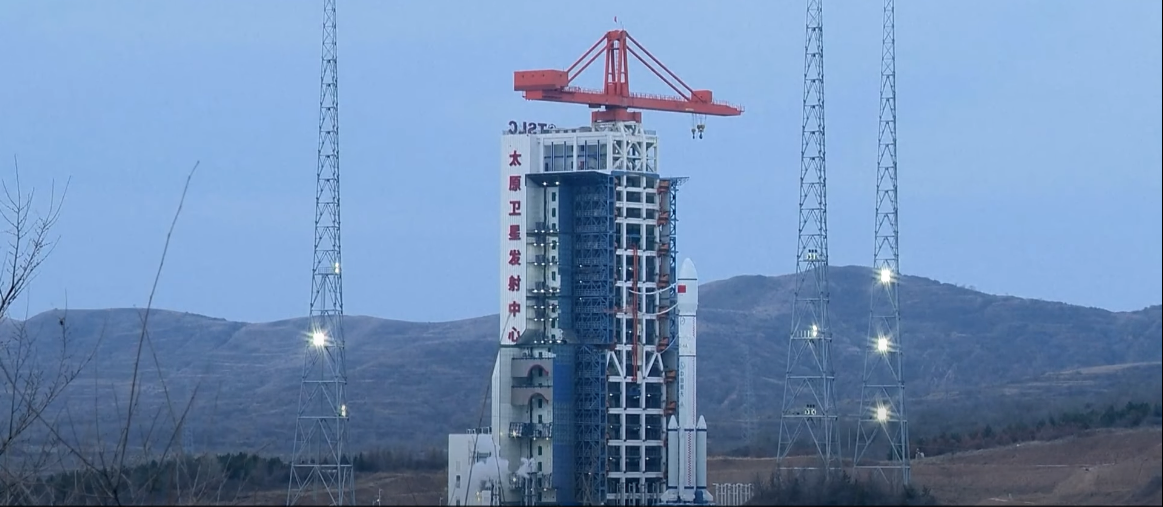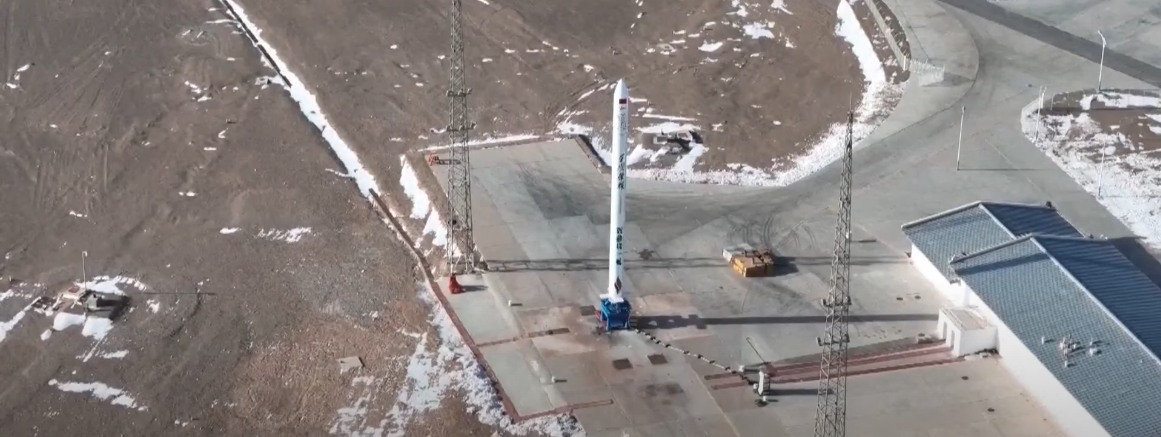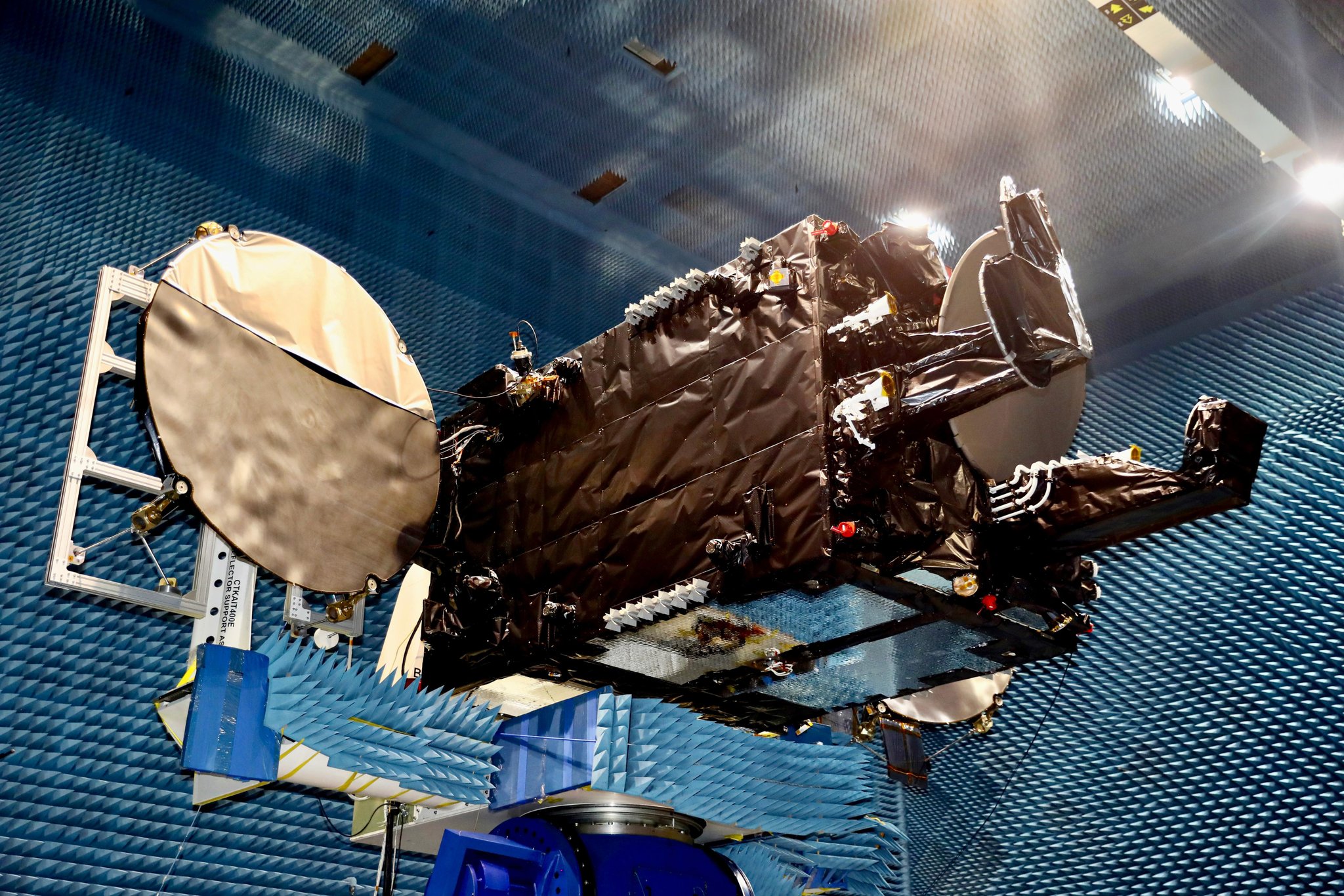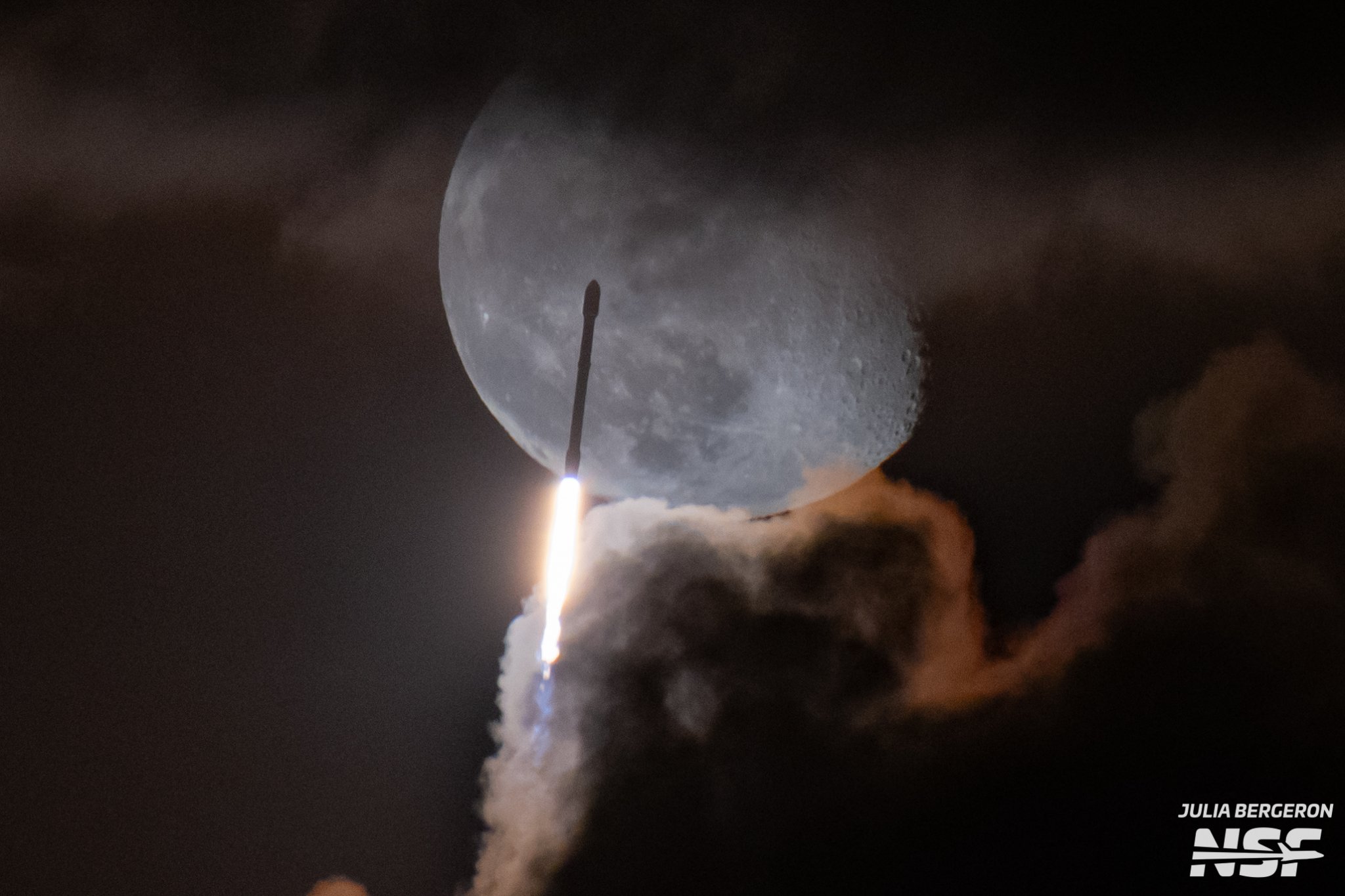We are entering the second half of 2024, the first week of July has already started with the third launch of the Japanese H3 rocket in the early morning hours of Monday UTC. This was discussed in our previous launch overview.
The coming week continues with two more Starlink missions from SpaceX, bringing the total number of Starlink satellites launched to more than 6,700. Two more launches are scheduled from China, with the first flight of the year for i-Space’s Hyperbola-1, now rescheduled for Friday, and another mission on a Chang Zheng 6A. SpaceX is also preparing to launch the first communications satellite built in Turkey next Monday.
The fifth flight of Firefly’s Alpha launch vehicle was scheduled for the night of Tuesday, July 2, from Vandenberg Space Force Base, but that date has now been postponed.
This week marks one year since the last Ariane 5 flew. Its successor, Ariane 6, is now ready for its first launch next week.
Another new vehicle, Space Pioneer’s Tianlong-3, expected to make its first launch later this year, suffered a setback Sunday when part of the vehicle lifted off earlier than expected. During a static fire test, the rocket’s first stage, which uses kerosene and liquid oxygen as fuel, left the pad and was destroyed seconds into the flight, falling 1.5 kilometers (0.9 miles) to the ground.
Wow. This is apparently what was supposed to be a STATIC FIRE TEST of a Tianlong-3 first stage by China’s Space Pioneer today. That’s catastrophic, not static. The company was aiming for an orbital launch in the coming months. https://t.co/BY9MgJeE7A photo.twitter.com/L6ronwLW1N
—Andrew Jones (@AJ_FI) June 30, 2024
The company reported a structural failure in the connection between the rocket and the test stand. This Chinese vehicle, still in development, is similar in altitude and approach to the Falcon 9 with a reusable first stage.
In the first half of the year, a total of 124 orbital launch attempts were made, with only a few failures, putting 14 crew members and over 1,330 payloads into orbit. The US and China accounted for 81% of the launches in that six-month period, with 57% and 24% respectively. SpaceX was responsible for over half of all orbital launches at 54%. The only other launches to fly from the US in the first half of the year were: the final Delta IV Heavy, the first Vulcan Centaur, the recent Atlas V launch of Starliner, and an Electron launching a mission for the National Reconnaissance Office.
For comparison, just two years ago, that same number of launches was reached with the last launch in September, and by midyear, the count had reached 75. A year ago, the industry had yet to break the 100 mark, with 98 orbital launches through the end of June. With weather recently delaying launches and 67 missions launched so far, SpaceX is still less than halfway to its ambitious goal of 148 launches in 2024. There’s still time to hit that mark if the company returns to its May launch cadence, with 14 flights per month, based on local time.
Fleet leader B1062 launched Starlink Group 10-3 from SLC-40 last week (Source: SpaceX)
Falcon 9 Block 5 | Starlink Group 8-9
The first Starlink mission of the week launched from SLC-40 at the Cape Canaveral Space Force Station on Wednesday, July 3, at 4:55 a.m. EDT (08:55 UTC), near the end of the launch window. This was SpaceX’s 70th launch of the year.
The previous launch from this pad saw booster B1062 reach the 22-flight milestone for the first time last week. The pad is approaching its 200th Falcon 9 launch soon, though possibly not this month, with 196 launches from this location to date, including this mission.
The booster for this mission was B1073 on its 16th flight. It had previously supported launches including Bandwagon-1, CRS-27, Hakuto-R, Amazonas Nexus, SES-22 and 10 Starlink missions. The booster landed on the autonomous drone ship A lack of gravitaswhich had experienced 75 landings and successful recoveries before this one. This is the booster that suffered a rare abort at ignition during an attempt to launch Starlink Group 10-2 in mid-June, causing the mission to fall behind Astra 1P and launch on an alternate booster, B1078.
With this mission, the company has launched more than 6,700 Starlink satellites to date. As of early this week, SpaceX had launched 6,698, of which 477 had returned and 5,232 had reached operational orbit. The company added Madagascar to the long list of more than 100 countries that now have access to the high-speed, low-latency internet service last week.
Firefly Alpha FLTA005 | ELaNa 43 “Summer Sound”
Originally scheduled for Wednesday, June 26 at 9:03 p.m. PDT (Thursday, June 27 at 04:03 UTC), the launch date for the 2024 first flight of Firefly Aerospace’s two-stage Alpha rocket took place on time at 9:04 p.m. PDT on July 3 (04:04 UTC on July 4). A launch attempt on Monday, July 1, was aborted seconds before liftoff due to a problem with ground support equipment on the launch pad. The mission is scheduled to launch from SLC-2W at VSFB, delivering a batch of CubeSats to orbit.
The launch was successful. The second stage reached nominal orbit and landed 40 minutes before launching the payload.
LAUNCH! Firefly Alpha launches the FLTA005 “Noise of Summer” mission from SLC-2W at Vandenberg.
Overview:https://t.co/DC8IosU8FR
NSF/Firefly livestream: https://t.co/n0IWI9nxeM photo.twitter.com/Xb0hDJKzWn
— Chris Bergin – NSF (@NASASpaceflight) July 4, 2024
This mission is part of the Venture Class Launch Services Demonstration 2 contract between NASA and Firefly. The eight CubeSat satellites in the payload are four built by universities, one built by an educational nonprofit, and three built by NASA.
The Venture Class launch services program is intended to provide more frequent and less expensive access to space for payloads with a higher risk appetite. Payloads built by educational institutions and non-profit organizations are eligible for selection through NASA’s CubeSat Launch Initiative (CSLI), intended to support such projects, and each flight is given an Educational Launch of Nanosatellites (ELaNa) mission name and number, this flight being ELaNa 43.
NASA’s Johnson Space Center in Houston is flying two R5 satellites, S4 and S2 2.0. These small, free-flying devices are built from off-the-shelf (COTS) components and are intended to test their suitability as low-cost inspection tools in orbit.
NASA Ames Research Center also has a satellite on board: TechEdSat 11 (TES 11). This satellite carries the latest and largest version of NASA Ames’ exo-braking experiment, which uses an umbrella-like device to increase drag on a spacecraft and help it de-orbit more quickly and safely.
For more information about the cargo, see our article about the flight.
Firefly last week announced a partnership with the Swedish Space Corporation to jointly launch satellites from the newly opened Esrange Space Center in Sweden. The first launch is scheduled for 2026. The FAA also last week added Firefly’s vehicles to its Space Data Integrator, allowing them to be tracked in near real-time during launch operations.

Chang Zheng 6A for the launch of Yunhai-3 02 in March 2024 (Source: CASC/CCTV)
Chang Zheng 6A | Unknown cargo
The launch of a Chang Zheng 6A from LC-9A at the Taiyuan Satellite Launch Center in China is scheduled for Thursday, July 4 at 23:00 UTC.
This will be the third launch for this two-stage vehicle type, which has been active since 2022 and is capable of lifting 5,000 kg into orbit, assisted by four side boosters. The single-stick CZ-6C variant made its debut in May.
The payload likely won’t be known until after launch. One possibility is the third in the Yunhai-3 series of satellites that are said to be used for atmospheric, ocean and environmental research. This same vehicle type carried the second in that series earlier this March and the first in late 2022.
Hyperbola-1 | Unknown charge
Launch is expected from Site 95A at the Jiuquan Satellite Launch Center in China on Friday, July 5 at 23:40 UTC. Hyperbola-1, also known locally as Shuang Quxian-1 or SQX-1, is a four-stage solid-propellant rocket powered by liquid-fueled engines for attitude control. This is the seventh flight for this type of vehicle to date.
Hyperbola-1 first flew five years ago this month and has a 50 percent success rate after some initial problems, including fuel valve blockages and the payload bay not separating. However, the last two missions have been successful, placing a dummy payload and then the DEAR-1 prototype recoverable experimental spacecraft into sun-synchronous orbit in December last year. Beijing-based i-Space became the first Chinese private company to reach orbit with the vehicle’s maiden flight.
At just under 21m long and 1.4m in diameter, the vehicle can launch up to 300kg into low Earth orbit. Details of the payload and its destination are yet to be announced prior to launch.

Hyperbola-1 ahead of the launch of DEAR-1 in December 2023 (Credit CCTV)
Falcon 9 Block 5 | Starlink Group 9-3
A second Starlink mission is scheduled for this week, launching from SLC-4E at Vandenberg Space Force Base in California on Saturday, July 6 at 8:33 p.m. PDT (03:33 UTC on July 7). While the booster has not yet been announced, it is expected to land on the autonomous drone ship, Of course I still love you, waiting about 600 km away.
Falcon 9 Block 5 | Türksat 6A
The first large communications satellite built in Turkey is scheduled to launch Monday, July 8, at 5:20 p.m. EDT (21:20 UTC) from SLC-40 at the Cape Canaveral Space Force Station in Florida. The communications satellite will be placed into a geostationary transfer transfer orbit en route to a geostationary orbit 22,000 miles (35,786 km) above the equator, positioned at 42 degrees East longitude. The booster and autonomous drone ship that will support this mission have yet to be confirmed.
The satellite weighs approximately 4,250 kg with fuel on board and is equipped with 20 Ku-band and 3 X-band transponders. It will provide data relay for commercial, civil government and military communications across Europe, North Africa, the Middle East and much of Asia.

Türksat 6A after construction and testing in March, before being shipped to Florida (Source: TÜBİTAK UZAY / Turkish Century)
The Türksat 6A project started almost a decade ago and the main contractor, TÜBİTAK UZAY, reported that the project will cover 118 countries and as many as 4.5 billion people.
(Main image: Falcon 9 launch (Credit – Julia Bergeron for NSF)
